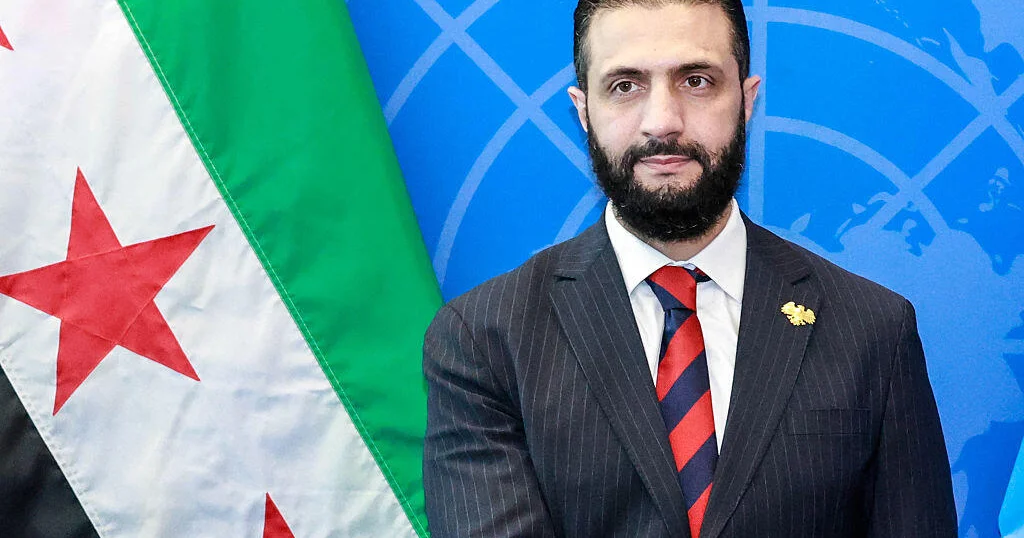In a significant diplomatic shift, Syrian President Ahmed al-Sharaa is set to meet with U.S. President Trump this coming Monday at the White House. This meeting marks the first visit by a Syrian president to the United States since the country gained independence in 1946. The backdrop for these discussions is the recent decision by Washington to remove al-Sharaa from its terrorism blacklist, which many analysts view as a pivotal development in U.S.-Syrian relations.
| Article Subheadings |
|---|
| 1) Overview of Al-Sharaa’s Arrival |
| 2) Key Meetings and Historical Context |
| 3) Implications of the U.S. Delisting |
| 4) Al-Sharaa’s Past and Political Influence |
| 5) The Road Ahead for Syria-U.S. Relations |
Overview of Al-Sharaa’s Arrival
Syrian President Ahmed al-Sharaa arrived in the United States over the weekend as the world watches closely. This marks a historic moment, not only for al-Sharaa but also for the diplomatic landscape between Syria and the U.S. The state-run Syrian news agency confirmed the president’s arrival, emphasizing the significance of this meeting with President Trump. Analysts describe this visit as a landmark achievement for a nation that has faced years of conflict and international isolation.
Key Meetings and Historical Context
Al-Sharaa’s visit to the White House follows earlier discussions he had with President Trump during the latter’s Middle East tour in May. Prior to his Washington visit, al-Sharaa addressed the United Nations General Assembly in New York City in September, a critical platform for voicing Syria’s aspirations on the global stage. In this context, historians and political analysts highlight that this meeting is not just a simple diplomatic engagement; it represents the first such visit by a Syrian president to the U.S. since Syria’s independence in 1946, marking a potential turning point in U.S.-Arab relations.
Implications of the U.S. Delisting
On Friday, the U.S. State Department made a pivotal decision to remove al-Sharaa from its global terrorism list. This move was anticipated, given the slow but notable shifts in Syria’s political landscape following the fall of former President Bashar al-Assad. According to State Department spokesperson Tommy Pigott, the Syrian leadership has made significant strides in meeting U.S. demands, such as working to locate missing American citizens and eliminating remnants of chemical weapons from the previous regime. “These actions are being taken in recognition of the progress demonstrated by the Syrian leadership after the departure of Bashar al-Assad and more than 50 years of repression under the Assad regime,” Pigott stated.
Al-Sharaa’s Past and Political Influence
Al-Sharaa’s journey to this historic moment has not been straightforward. Approximately two decades ago, he was linked with al Qaeda, which resulted in his arrest in 2005 and subsequent imprisonment in American and Iraqi prisons for six years. His release in 2011 saw him pivot to lead an al Qaeda affiliate in Syria. Remarkably, he abandoned his allegiance to the terrorist organization in 2016. Analysts observe that this complicated history has contributed to his appeal as a changed leader unwilling to continue the oppressive policies of the Assad regime, suggesting a new, potentially more democratic direction for Syria.
The Road Ahead for Syria-U.S. Relations
Looking forward, this diplomatic thaw could signify a promising pathway for Syria and the United States to navigate their complex relationship. Al-Sharaa’s leadership is characterized by a commitment to fostering a more inclusive political process. U.S. officials, such as envoy Tom Barrack, have expressed optimism that al-Sharaa may cement a formal agreement to join the international coalition against the Islamic State. Analysts believe that a successful outcome from Monday’s meeting could catalyze further cooperation between the two nations, leading to improved regional stability.
| No. | Key Points |
|---|---|
| 1 | Al-Sharaa’s visit represents the first by a Syrian president to the U.S. since 1946. |
| 2 | The U.S. removed al-Sharaa from its terrorism blacklist, facilitating diplomatic talks. |
| 3 | Discussions focus on Syria’s need for regional security and a political process. |
| 4 | Al-Sharaa’s past involvement with terrorism poses challenges for his current leadership role. |
| 5 | Future diplomatic engagements could pave the way for cooperation against extremist threats. |
Summary
The upcoming meeting between Syrian President Ahmed al-Sharaa and U.S. President Trump is poised to reshape not only their bilateral relations but also the broader geopolitical landscape of the region. With Syria emerging from years of conflict and international sanctions, al-Sharaa’s leadership may signify a new chapter, marked by a commitment to reform and cooperation. As both leaders engage in critical talks about regional security, the eyes of the world will be on Washington, anticipating the outcomes that could arise from this unprecedented dialogue.
Frequently Asked Questions
Question: What are the implications of al-Sharaa’s removal from the U.S. terrorism list?
This move is seen as a crucial step toward improving relations between the U.S. and Syria, allowing for more open diplomatic discussions and potential cooperation against common threats.
Question: Why is this meeting historically significant?
Al-Sharaa’s visit marks the first time a Syrian president has traveled to the U.S. since the country’s independence in 1946, indicating a possible thaw in relations after decades of hostility.
Question: What are the future prospects for Syria-U.S. relations following this meeting?
If the meeting is successful, it could lay the groundwork for increased collaboration on issues such as counter-terrorism, regional stabilization, and the restoration of diplomatic ties.
